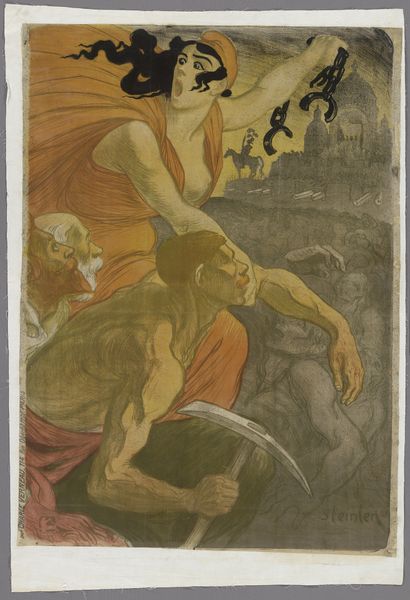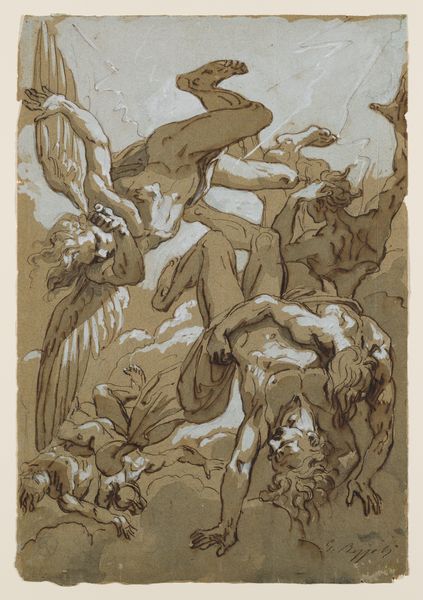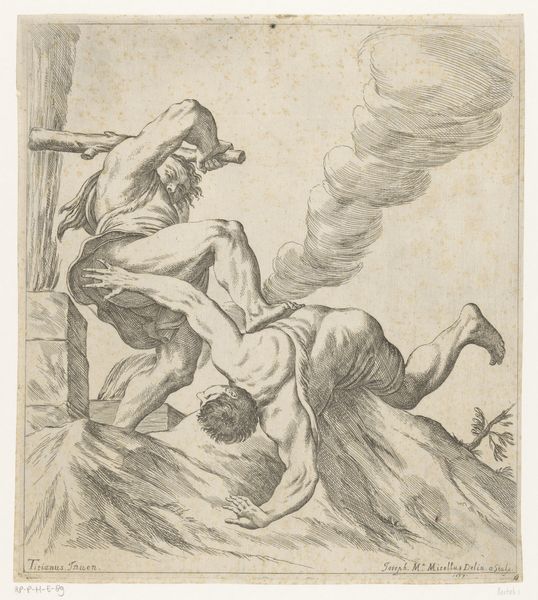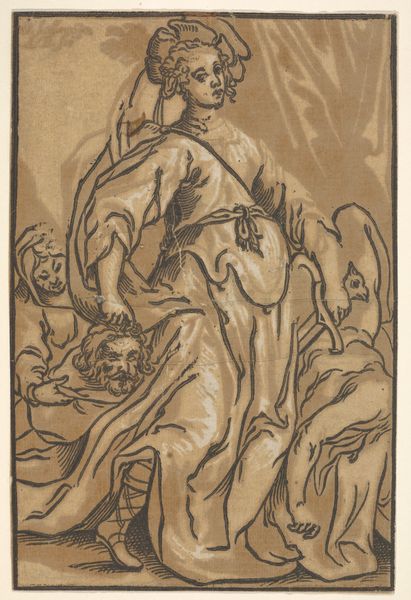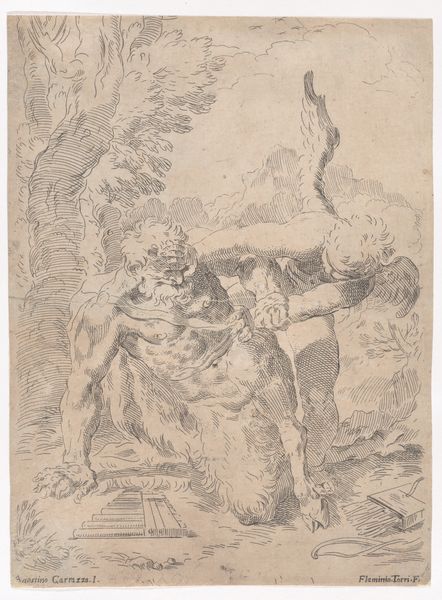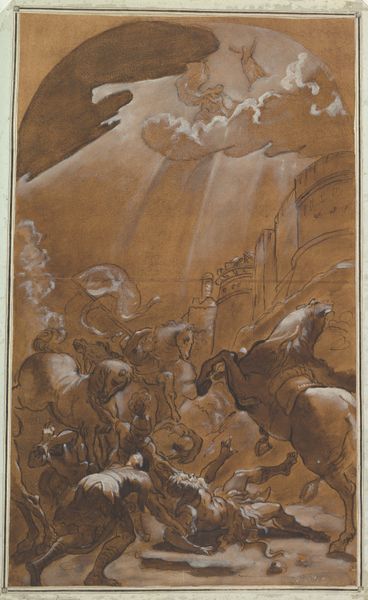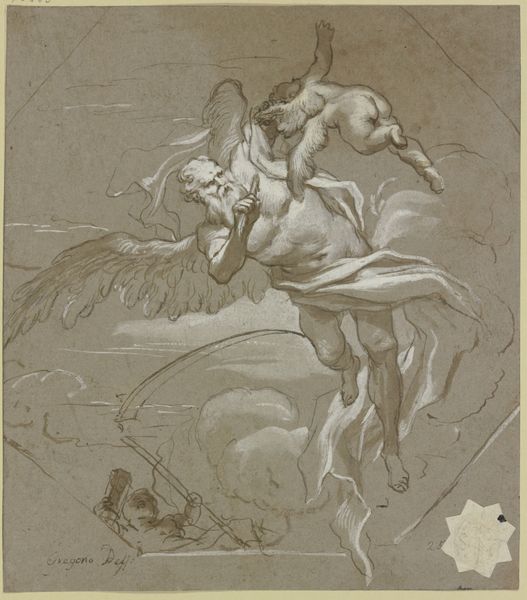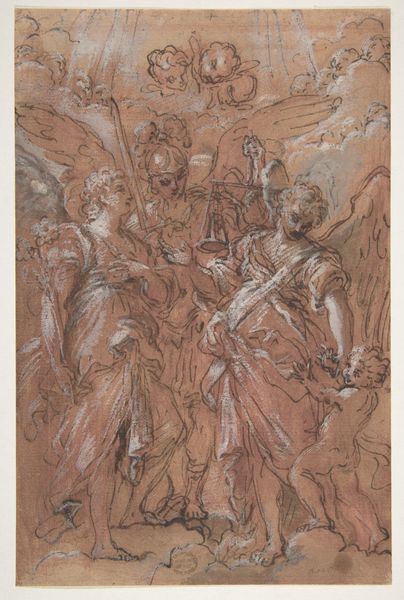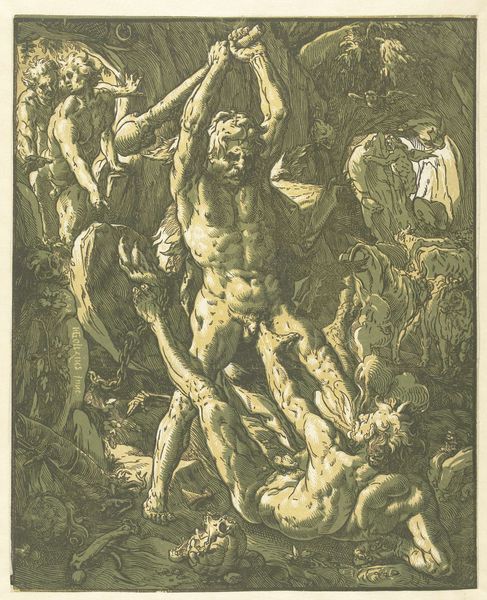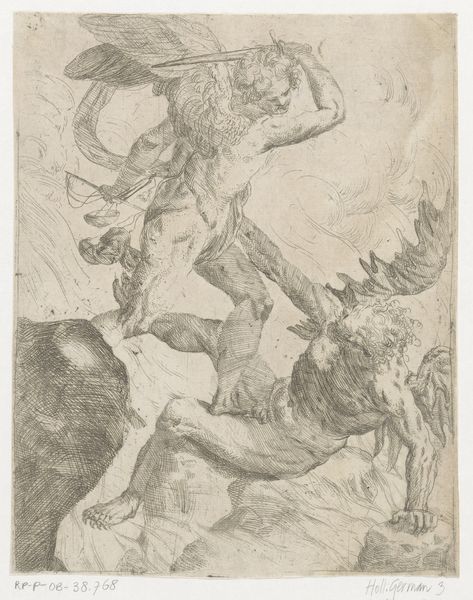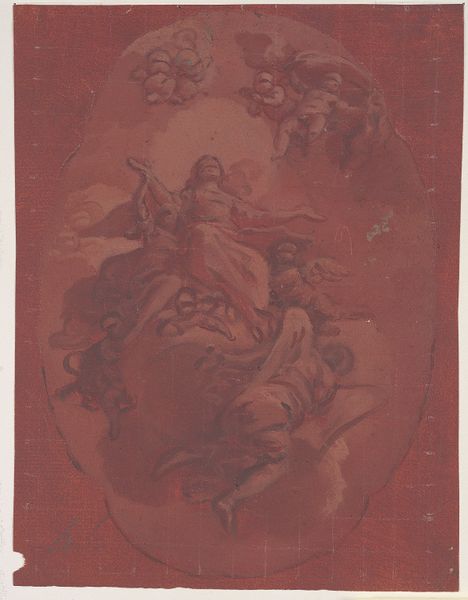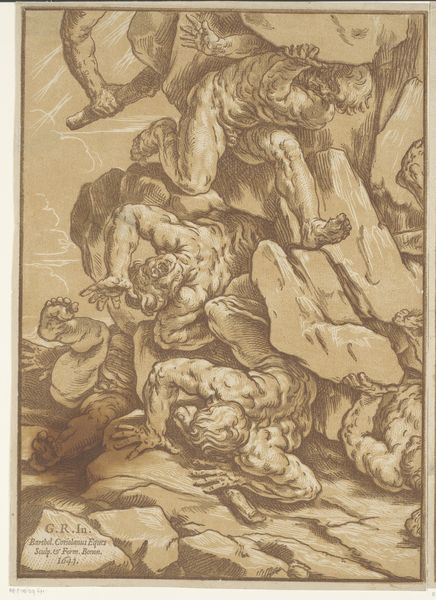
Dimensions: 12 x 9 in. (30.48 x 22.86 cm) (plate)
Copyright: Public Domain
Curator: Here we have Johann Gottlieb Prestel's engraving, "Triumph of Truth over Envy," created around 1780. The print on paper presents an allegorical scene. What strikes you initially about this image? Editor: My first impression? Power. Raw, theatrical power. The composition, the muscularity of the figures...it feels like a Baroque opera condensed onto a single sheet. The limited palette lends an earthy, almost sepia-toned drama. Curator: Indeed! Prestel employed engraving techniques to create a highly dramatic scene. Truth, depicted as a robust woman, stands triumphant over Envy, a writhing, serpent-entwined male figure. Notice how Truth brandishes a weapon, poised to strike. It’s a visual representation of Enlightenment ideals clashing with what was perceived as ignorance. Editor: The snake itself is rich in symbolism, obviously. But it's not just about primal fear. Throughout art history, serpents have signified hidden knowledge, chaos, but also healing and rebirth. So, is Prestel suggesting envy, in its own twisted way, contains the seeds of something new? The way the woman hovers on a cloud seems so forced, though. She isn’t the epitome of "truth" if she has to try so hard. Curator: An intriguing thought! I do find the use of classical iconography here quite overt. Truth, as a symbol, has been depicted throughout history with various attributes. The dynamic action underscores the decisive victory of enlightenment values—logic, reason, fact—over the darkness of envy, ignorance and malice. The scene becomes a narrative frozen in time, celebrating intellectual and moral clarity. Editor: Right, this is Germany in 1780! Feels to me like a manifesto as much as art. Though if envy *was* vanquished that easily, our museums might be a lot emptier, eh? There is truth in the fact that artists tend to have a healthy dose of envy of each other’s genius! I find the dark colors of this scene particularly arresting because I consider ‘truth’ a very clear concept. Maybe he should have considered a title change! Curator: A great observation that enriches our understanding of the artist and his historical and social framework. It really provides such depth for this piece of narrative art. Editor: Agreed. Thinking about how this image plays with ancient visual cues helps it to cut through time and stay so potent, doesn't it?
Comments
minneapolisinstituteofart almost 2 years ago
⋮
A tour de force, this aquatint was made from two plates, one printed in brown ink, the other in a yellow-ochre base color which was then touched with gold leaf. Husband and wife printmakers Johann and Maria Catharina Prestel were virtuosos of the aquatint medium. They specialized in reproducing old master drawings, publishing three private collections before their bankruptcy and divorce. Maria Catharina subsequently moved with their four children to London, where her printmaking career flourished. Although Johann’s signature appears on this print, scholars have recently attributed it to Maria Catharina.
Join the conversation
Join millions of artists and users on Artera today and experience the ultimate creative platform.

